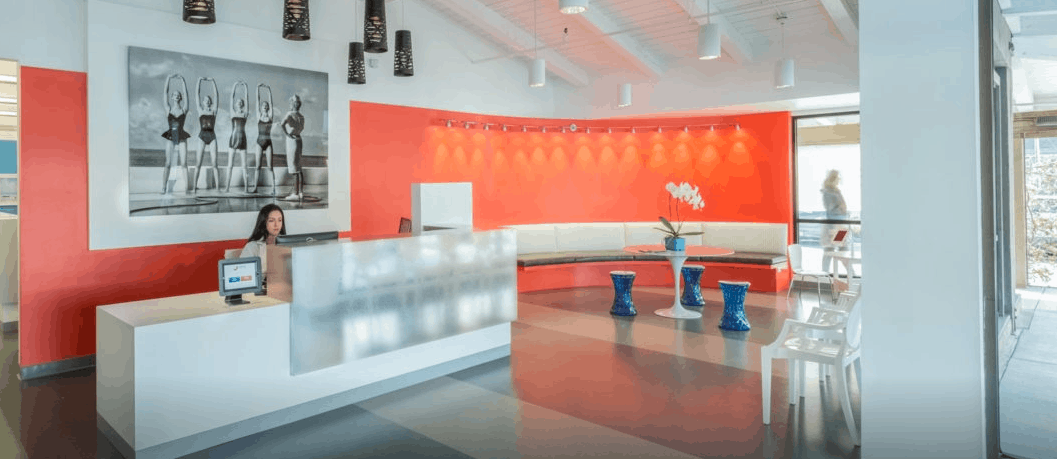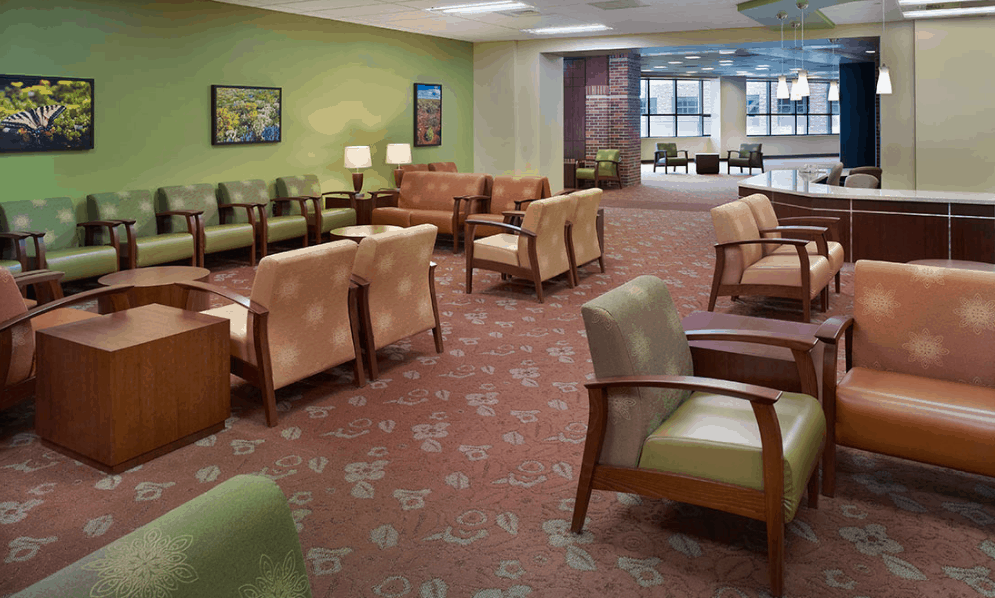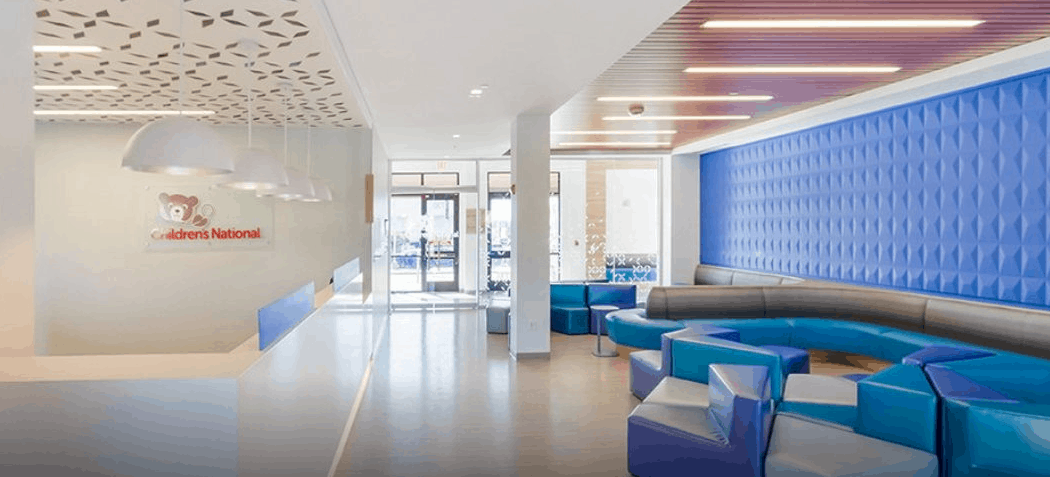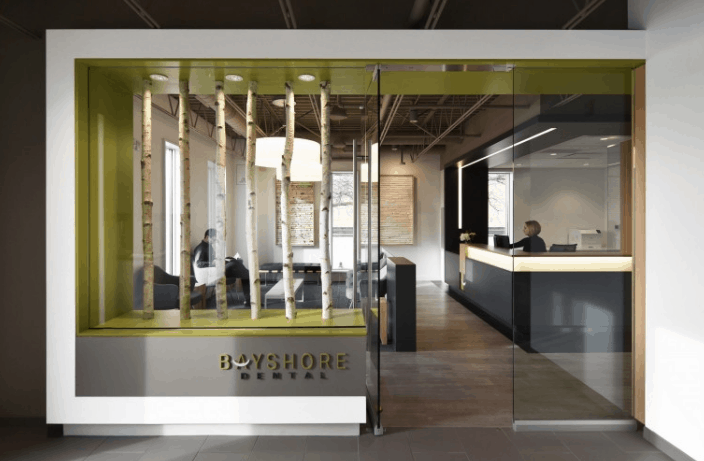Being seated in a hospital or a doctor’s office can feel like a dreadful experience. Harshly lit, sparsely decorated and designed for utility and volume, incoming patients can feel as if they’re just another number being hurried through on a long list of patients.
However, this is changing. More healthcare facilities understand this initial experience can make-or-break how the patient feels when they eventually see their doctor. This means waiting room spaces are being redesigned to not only influence the mood and preconceptions of incoming patients but to also minimize animosity, nervousness—or at least tap into the increasing trend of “self-care”. These are some ways healthcare facilities are transforming their waiting rooms into more enjoyable spaces.
Make Yourself at Home
A study shows a direct correlation between aesthetically appealing waiting rooms and positive patient opinions about their doctor visits. Patients and their friends and family feel more at ease with a well-designed waiting room and waiting room experience. Thanks to home décor, healthcare waiting rooms are becoming less antiseptic and, instead, cozier. For the Golden Gate Urgent Care Centre in Mill Valley, Oakland, bright colored tangerine walls, plants and artwork that conjures editorial fashion magazines means (if you squint), it’s bright open-concept resembles more a living room rather than a clinical treatment center.

Stay A Little While
While waiting room seating may seem like an obvious way to increase patient comfort, it’s often overlooked—especially for patients with special needs and those who require postoperative care. At St. Luke’s Medical Center, in Twin Falls, Idaho, their waiting room design is an example that opts for seating with comfort, and a clear color story of greens and browns to make patients feel comfortable and calm in their healthcare options. A larger chair, with versatile seating styles and layouts also means patients can choose where they’d like to sit, while they wait to see their doctor.

What’s the WiFi Password?
People can’t imagine life without the Internet. In fact, according to a survey by Forbes, customers who had access to complimentary WiFi spent 62% more time in stores or restaurants—so imagine what it does for patient satisfaction. To make the long waits more bearable—and to appeal to patients without unlimited data plans—healthcare facilities are starting to implement waiting room WiFi as a way to distract from abnormal wait times, and to just create a more optimal mood by the time you enter to see your doctor. Charging stations for smartphones are also being implemented, with some specific furnishings, such as the River chair, created with charging in mind; so distracting yourself from blood work, test results—or just an annual check-up—is easier than ever.
I Just Need Some Space
In many healthcare facilities, patients are often seated in crowded areas where there are little privacy and space. At Annapolis Outpatient Clinic, in Annapolis, Maryland, their facility shakes it up by using open-concept, geometric couches in calming blue tones. The couches minimize the restriction of armrests, and even dares waiting room patients to make themselves comfortable (at least as much as is socially acceptable; especially on busier days).

Open for Business
Healthcare waiting rooms can feel very impersonal and uninviting, and can usually involve a closed door which opens into a small, windowless space. Many healthcare options are opting to design with openness in mind; such as the example of Wisconsin’s Bayshore Dental. A windowed unit with accents of light green, and decorative wood in the large front window, the space conjures elements of nature, which can relax a patient; especially those who may not especially adore a trip to the dentist.

The Wait is Over
Waiting rooms don’t have to be an unpleasant experience. By adding personal touches, reassuring and calming design elements, and a general human touch, waiting rooms can advance the healthcare experience beyond the uncontrollable; such as long wait times, unbearable treatments and tough diagnoses. While new furniture and accessories may seem like a superficial step to better healthcare, healthcare is a complicated, controlled system that can’t be changed easily. With healthcare facilities starting with controllable variables—such as waiting room design—doctors, practitioners and private practices can retain patients and keep them happy. So while the treatment may be a pain, that doesn’t mean the wait should be.
The Editorial Team at Healthcare Business Today is made up of skilled healthcare writers and experts, led by our managing editor, Daniel Casciato, who has over 25 years of experience in healthcare writing. Since 1998, we have produced compelling and informative content for numerous publications, establishing ourselves as a trusted resource for health and wellness information. We offer readers access to fresh health, medicine, science, and technology developments and the latest in patient news, emphasizing how these developments affect our lives.








